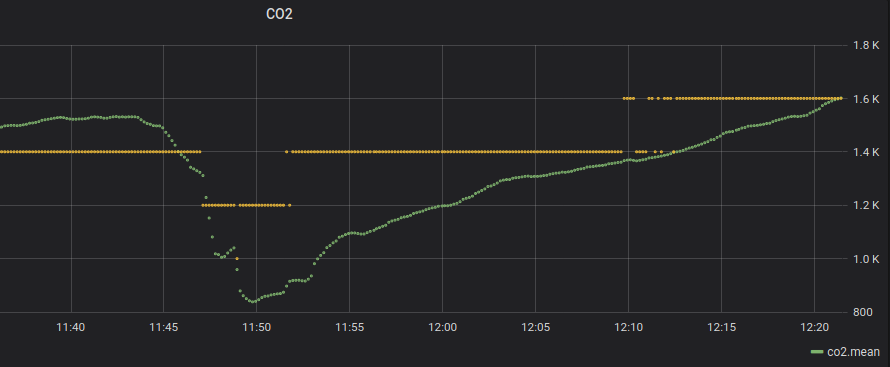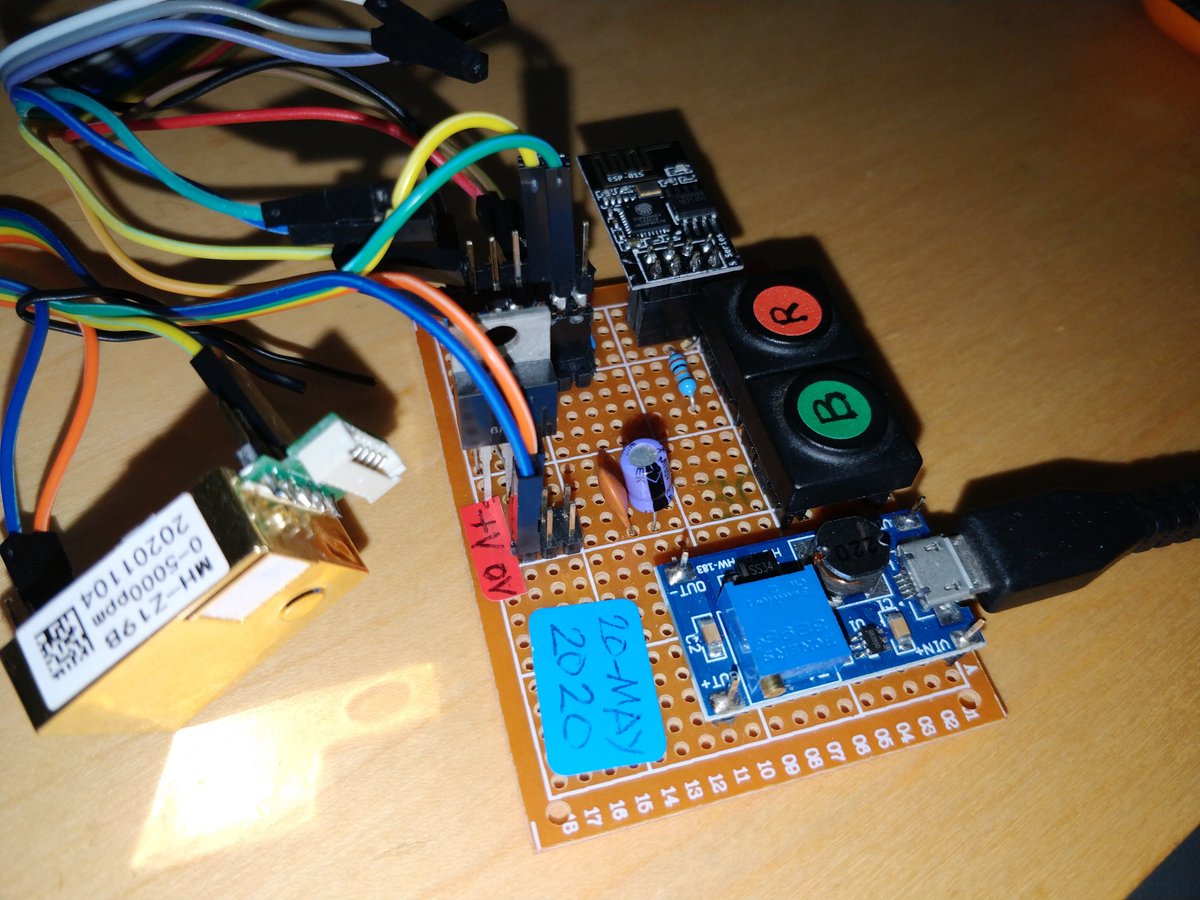Interesting results from my new CO2 sensor; a MH-Z19B NDIR sensor connected to an ESP8266 running Tasmota. The data is sent to an Influx time series database and viewed with Grafana. You can see, in real-time, the efficacy of ventilating a room. Also very cold in my office (15C).
Here's the prototype that produced this data, attached to my ESP8266 dev board. The CO2 sensor costs around £20, the ESP8266 just £1.50. It needs a 5V supply and a 3V3 regulator for the μC. It connects to WiFi and sends data to an MQTT server. These could be used in classrooms.
We hear far too little about ventilation and hardly anyone is looking at how you measure its effectiveness. Assuming air is not circulating (which is true in most naturally ventilated settings) the CO2 level indicates the amount of exhaled air in the room.
This is a good measure of how much aerosol is being put into the air, possibly carrying the virus. How long should we leave the room empty? Will opening the window for 30m work? How long is enough? How do we answer these questions, to keep people safe? Metrics is the only way.
For more on how viruses move through the air, this excellent TED talk by Lydia Bourouiba :
Plus the excellent El Pais infographic : https://english.elpais.com/society/2020-10-28/a-room-a-bar-and-a-class-how-the-coronavirus-is-spread-through-the-air.html
Very few people seem to be looking at this. @CIBSE_NatVent https://twitter.com/CIBSE_NatVent/status/1330964619498840066

 Read on Twitter
Read on Twitter



